In the world of real estate, Return on Investment (ROI) isn’t just a metric; it’s the ultimate goal. While it’s easy to get caught up in the excitement of a new property, a successful investor knows that the real game is played in the numbers. Maximizing your ROI is about more than just buying low and selling high. It’s a strategic, multi-faceted approach that spans the entire lifecycle of a deal, from initial analysis to final disposition. This detailed guide will serve as your blueprint for unlocking the highest possible returns on every real estate transaction.
The Art of the Deal: Pre-Purchase Analysis
The most significant gains are often made before a single document is signed. A high ROI starts with a meticulous and disciplined pre-purchase analysis.
1. Go Beyond the Listing Price: Find Off-Market Deals
Everyone is looking at the same properties on popular listing sites. To truly maximize ROI, you need to find deals before they hit the open market. This is where your network becomes your most valuable asset.
- Network with Wholesalers and Agents: Wholesalers specialize in finding distressed properties and putting them under contract, which they then sell to investors. Building relationships with real estate agents who work with investors can also give you early access to listings.
- Direct-to-Seller Marketing: Send letters or postcards to absentee owners or homeowners in specific areas. Many people are willing to sell without the hassle of a listing agent if they know they have a direct buyer.
- Drive for Dollars: This classic strategy involves driving through neighborhoods and looking for signs of a distressed property: overgrown yards, broken windows, or boarded-up doors. Research the owners and contact them directly.
2. The 70% Rule: A Quick and Powerful Filter
For investors who fix and flip properties, the 70% Rule is a non-negotiable principle. It helps you quickly determine a property’s maximum purchase price to ensure a healthy profit margin. The rule states that you should pay no more than 70% of the After Repair Value (ARV) minus the cost of repairs.
- Formula: Maximum Offer = (ARV x 0.70) – Estimated Repairs
- Example: If a house is worth $300,000 after repairs (ARV) and requires $50,000 in renovations, your maximum offer should be ($300,000 x 0.70) – $50,000 = $160,000.
This simple formula ensures you have a built-in safety net, accounting for unexpected costs and market fluctuations.
3. Run the Numbers: The Detailed Pro Forma
Before making an offer, create a detailed pro forma—a financial projection of the property’s performance. A pro forma for a rental property should include:
- Income: Gross rent, laundry income, etc.
- Expenses:
- PITI: Principal, Interest, Taxes, and Insurance.
- Operating Expenses: Maintenance, repairs, property management fees, utilities, and a vacancy reserve (typically 5-10% of gross rent).
- Key Metrics: Calculate your cash-on-cash return, which measures the annual return on the actual cash you’ve invested. This is a far more accurate measure of profitability than a simple cash flow calculation.
Value-Add Strategies: The Path to Enhanced ROI
Once you’ve acquired the property, your focus shifts to adding value. The goal is to make the property worth more than you paid for it.
1. Strategic Renovations: Focus on High-Impact Upgrades
Not all renovations are created equal. To maximize ROI, focus on upgrades that have the highest return.
- Kitchen and Bathroom Remodels: These are proven to generate the highest ROI. You don’t need to splurge on high-end appliances; clean, modern finishes and a functional layout are what renters and buyers value most.
- Curb Appeal: First impressions matter. A fresh coat of paint, new landscaping, and a well-maintained exterior can significantly increase a property’s perceived value.
- Maximizing Space: Converting an unused attic or basement into a livable bedroom or office space can drastically increase a property’s square footage and, consequently, its value.
2. Optimize Rent and Operations
For rental properties, a few strategic moves can dramatically increase your monthly cash flow and, by extension, your ROI.
- Market-Rate Rent: Don’t just stick with what the previous landlord charged. Research comparable rentals in the area and ensure your rent is at or slightly below the market rate to attract high-quality tenants.
- Screen for Quality Tenants: A reliable tenant who pays on time and takes care of the property is a direct contributor to your ROI. A thorough screening process can save you thousands in eviction costs and property damage.
- Implement Fee-Based Services: Consider adding an on-site laundry facility or charging a small pet fee. These small additions can add up to a significant increase in your total income.
Post-Acquisition ROI: The Long-Term Game
Your job doesn’t end after the renovation is complete or the first tenant moves in. Long-term strategies are what turn a good deal into a great one.
1. Refinance and Recycle Capital
One of the most powerful strategies for building wealth in real estate is the BRRRR method (Buy, Rehab, Rent, Refinance, Repeat). This strategy allows you to pull your initial capital back out of a deal to use for the next one.
- Process: After you’ve purchased and rehabbed a property and it’s generating income, get it appraised. If the value has increased significantly, you can refinance your loan to a new, larger one. The difference between the new loan and your initial investment is the cash you can pull out tax-free to buy your next property.
2. Leverage Tax Benefits
The U.S. tax code is highly favorable to real estate investors. Maximizing these benefits is a key part of your ROI.
- Depreciation: You can deduct a portion of the property’s value each year to offset your income. This can create a significant passive income stream that is not subject to income tax.
- Deductions: Keep detailed records of all expenses. You can deduct everything from property taxes and mortgage interest to insurance, maintenance, and travel to the property.
- 1031 Exchange: When you sell a property, you can defer capital gains taxes by rolling the proceeds into a “like-kind” property. This allows you to scale your portfolio without losing a chunk of your profits to the IRS.
The Investor’s Takeaway
Maximizing ROI is not about luck; it’s about a disciplined, strategic approach to every step of the real estate process. From finding deals off-market and running meticulous financial analyses to implementing value-add renovations and leveraging long-term tax benefits, every decision you make contributes to your bottom line. By mastering these principles, you can transform a simple property into a powerful wealth-generating machine.



